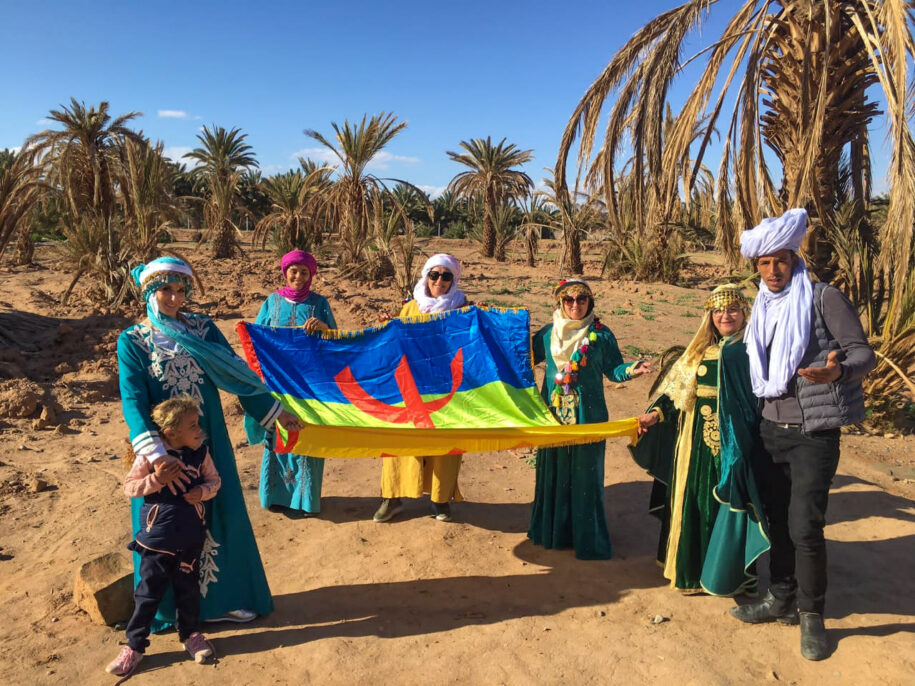Who lived in Morocco first?
Synopsis.
Embark on an extraordinary journey as we unveil the multicultural influences that have shaped Morocco into the fascinating country it is today. From ancient civilisations to the colonial era, Morocco has been a melting pot of influences, each of which has left a unique mark on the country’s heritage. Join us for an in-depth look at Morocco’s rich and colourful culture.
Ancient Civilisations:
Morocco’s history dates back thousands of years and the land has been home to a variety of ancient civilisations. From the Phoenicians to the Carthaginians and Romans, these early inhabitants established settlements, trade routes and cultural exchanges that shaped Morocco’s future. Here you’ll find remnants of their architecture, such as the Roman ruins of Volubilis and the Phoenician ruins of Lixus, offering a glimpse into Morocco’s ancient past.
Berber Heritage: Who lived in Morocco first?
The Berbers are one of the most influential peoples on Moroccan culture. With a deep connection to the land and a unique language, the Berbers have played a pivotal role in shaping Moroccan traditions and identity. Visit the Atlas Mountains, where Berber villages proudly preserve ancient customs and showcase vibrant arts and crafts. Engage with local communities, sample traditional Berber cuisine and learn about their rich folklore and music.
Arab-Islamic Heritage:
The arrival of Arab conquerors in the 7th century opened a new chapter in Morocco’s cultural evolution. Islam became the dominant religion, influencing architecture, language and social customs. Marvel at the intricate beauty of Morocco’s mosques, such as the iconic Koutoubia Mosque in Marrakech, and wander through the maze of alleys, vibrant markets, and ornate riyals of the medina (old city). Immerse yourself in the sound of calls to prayer, the aroma of exotic spices and the hospitality that characterises Moroccan Islamic culture.
Jewish Tradition:
Morocco has also been home to a thriving Jewish community for centuries, contributing to the country’s multiculturalism. Explore the Jewish Quarter (Mellahs) in cities like Fez and Marrakech, where synagogues, cemeteries, and historic sites tell the story of a vibrant Jewish population. Interact with the local Jewish community, explore their culinary traditions and witness Jewish life.
Colonial influence:
In the 19th and 20th centuries, Morocco was influenced by European colonial powers, mainly France and Spain. This era left an indelible mark on Moroccan architecture, language and cuisine. In cities such as Casablanca and Tangier, you’ll see a fusion of Moroccan and European styles, from Art Deco buildings to lively cafés reminiscent of the French Riviera. Explore the French colonial architecture of Ville Nouvelle, a stark contrast to the historic Moroccan medina.
Welcome to the heart of North Africa, the fascinating country of Morocco is home to a treasure trove of culture. Among its many fascinating elements, the Berber flag stands out as a symbol of the traditions, history and resilience of the native Berbers. Join me on a fascinating journey to delve into the meaning and beauty of the Moroccan Berber flag.
The Berbers
Before we get into the significance of the Berber flag, let’s get to know the Berbers. These North African natives have a deep and ancient history dating back thousands of years. The Berber culture has survived numerous dynasties and empires, overcoming many obstacles to preserve its language, traditions and identity.
A symbol of unity and identity:
The Berber flag, known as the “Azelmad” in Amazigh, is more than just a colourful piece of cloth. It represents the unity and identity of the Berbers from different regions and tribes in Morocco and other parts of North Africa. The design of the flag usually includes horizontal bands of blue, green and yellow, as well as other symbols or variants representing different Berber groups.
Colours with meaning:
Each colour of the Berber flag has a specific meaning. The colour blue symbolises the Mediterranean Sea and the Atlantic Ocean, representing the Berber connection with the ancient seas. Green represents the fertile land of the Maghreb region, highlighting the Berber people’s agricultural roots. The yellow colour represents the Sahara desert, symbolising the nomadic lifestyle that has been an integral part of Berber culture for centuries.
The revival of the Berber flag:
At various times in Morocco’s history, the Berber flag has been suppressed and restricted. However, recent times, especially the 20th century, have seen a resurgence of interest and pride in the Berber heritage. The Berber flag has become a symbol of cultural renaissance and resistance to marginalisation, contributing to the recognition and appreciation of Berber culture in Moroccan society.
Cultural festivals and events:
Visiting Morocco during one of the many cultural festivals or events is an ideal way to experience the vibrancy of the Berber flag. events such as the Imilchil Marriage Festival, Tan Tan Moussem and the National Festival of Popular Arts are great opportunities to witness traditional Berber dance, music, handicrafts and, of course, the splendid display of the Berber flag.
Support local artisans:
The Berber flag has far-reaching cultural significance and you can see it in the wide range of handicrafts and textiles made by Berber skilled artisans. A visit to a local market and co-operative can support these craftspeople, as well as gaining a unique piece of Berber heritage to take home.


Leave a Reply